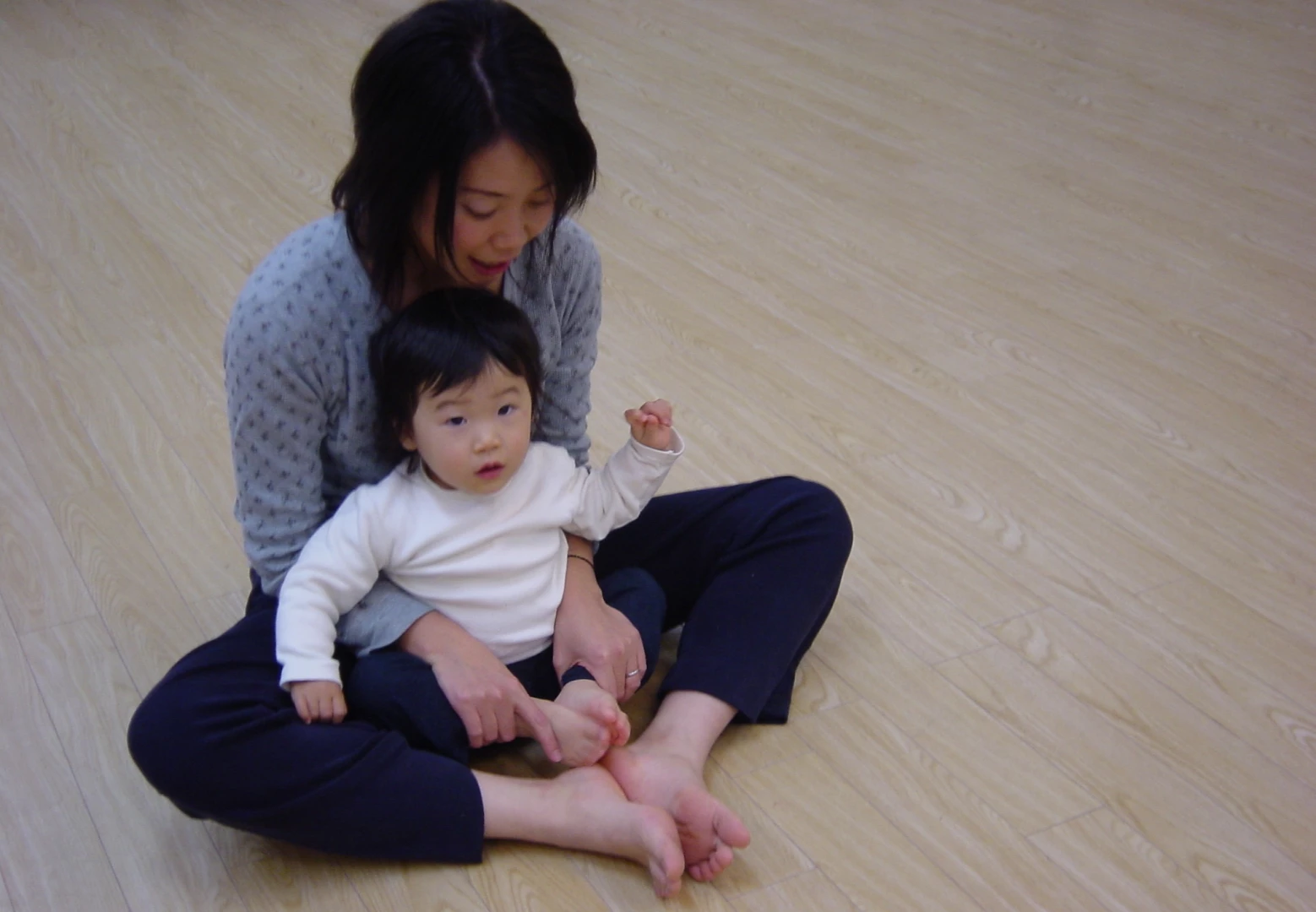Getting Babies to Sleep: Yoga and Ayurvedic Solutions

Many babies are natural born sleepers. It’s the first thing they do well. But, environmental and sunlight cues can sometimes make it difficult to get newborns into a sleeping routine. Ayurveda and baby yoga can help.
According to Dr. Jose Colon, sleep medicine specialist and author of three books about sleep, including one for infant sleep, newborns begin to consolidate their sleeping habits into nighttime hours by three months of age. By six months, they should be sleeping through the night. But sometimes it takes little ones a while longer to develop a routine.
What Sleep Deprived Parents Can Do
Colon says developing a regular sleep schedule isn’t so much an issue of training a baby. It’s about helping families teach their infants to associate their cribs with sleep. He has a number of good suggestions.
Do Not Let A Baby Fall Asleep In Your Arms
Most of us wake up several times a night and, given that babies sleep more hours than most adults, they have a tendency to wake up even more frequently. Many parents try to strike a balance between their sleep needs and baby’s wakefulness by snuggling with their infants and rocking them to sleep in their arms.
The problem is, when a baby wakes up later back in a crib, he may be disoriented and looking for those comforting arms and begin to scream or become fearful of going to sleep. “Imagine if you went to sleep in your bed but woke up in the kitchen. You’d freak out,” said Dr. Colon.
Learn Your Baby’s Sleep Cues
Colon also recommends that parents learn their child’s sleep cues such as yawning and eye rubbing. This often signals a good time to place a baby in the crib when they are awake but drowsy. This way, the baby learns quickly, to associate the bed with sleep.
This isn’t an immediate proposition, however. In the early stages of this routine, babies should be expected to cry. Dr. Colon suggests that parents go into the room and check on the crying baby to make sure she is safe and her needs are met. But, this process takes patience to resist continual check-ins while the child builds bed-means-sleep awareness.
Parents can also take steps to help babies relax and prepare for sleep. Lullabies and books are great, preferably the same song or story every night. In addition, Dr. Colon also recommends the following easy-to-take steps:
Heart-Warm Touch
Rub the palms of your hands together above your child to generate warmth and love. Imagine loving energy pouring out from your heart and into your hands. Place both your hands on your child’s shoulders and slowly move your warm touch all the way down the body to the tips of the toes.
Corkscrew
Let your child rest on his or her back with your thumbs holding the knees of bent legs together. Circle the knees clockwise with both of your hands as you sweetly sing the word “corkscrew.”
Baby Yoga
The benefits of baby yoga are abundant. It aids digestion and soothes a colicky baby. And, it’s a helpful partner for alleviating typical baby crankiness.
Yoga maintains a baby’s natural flexibility and gives them a sense of their physical body in space. It’s also a terrific bonding exercise that offers “skinship” between a parent and a child. What’s more, yoga may not only help babies fall sleep, but it may actually help them to stay asleep longer.
Angie Ahmed is the founder of the yoga studio Little Namaste, and has opened studios in the United States, Japan and Australia. Normally, after every class sees small infants cradled in slumber on their mats. “Yoga is some kind of medicine,” she said.
But baby yoga isn’t just to be practiced during class time. Ahmed urges parents to take their baby yoga bonding time out of the studio and make it part of a daily routine. She suggests yoga time for right after a bath when the body is warm or just before bed. A few baby yoga poses, particularly twists, can get an infant in the right mood for sleep.
Yoga Poses for Babies
Butterfly Twist
While the baby lies on the back, bring the soles of his feet to touch, then lift him with one hand and press his feet toward his stomach. Then, slide a hand under the baby’s lower shoulder and very gently twist him to one side. Then repeat on the opposite side.
Twisty
Sit on the floor with the baby sitting in front of you. Extend her legs long. Then gently hold her hands and twist her body so that she can touch the opposite toe with the opposite hand and repeat on the other side. As she twists, sing, “Twisty! Twisty!”
Ayurveda and Baby Sleep
Not all babies’ sleep is alike. It’s helpful to know your baby’s Ayurvedic dosha to gain an understanding of his or her particular sleep tendencies.
Your child’s dosha is his or her energetic code. According to Ayurveda, an ancient Indian medicine system and sister science to yoga, every human being has a doshic makeup that is set at birth.
These doshas are divided into 3, somewhat overlapping categories: Kapha (heavy, slow, steady and strong), Pitta (hot, medium build, intense, fiery), and Vata (thin, light, airy, dry, changeable).
When parents know their child’s unique combination of Vata, Pitta and Kapha, they can anticipate issues and help their children move through their individual sleep patterns.
And it is sleep behavior that is often one of the first clues to an infant’s dosha, according to Tess Chiodo, an Ayurvedic practitioner in Southwest Florida.
Vata Babies
Vata-dominant babies, tend to appear as the stressed worriers. They are also likely to be the most challenging sleepers, Chiodo said. They also may be hard to coax into drowsiness due to a tendency toward activity. They are also the least likely to stay asleep during the night and are prone to nightmares.
Given that sound is the dominant element for Vata babies, parents should keep a slumbering infant in a very quiet space. Vata babies also get cold, so parents may choose to keep them bundled up in a very warm room.
Pitta Babies
Pitta-dominant babies tend to be high in energy, prone to anger, and often sleep hard and quick. Swaddling a Pitta baby after the early weeks may not be wise, as they tend to overheat. Pitta babies will also wake early and will often be very hungry.
Kapha Babies
Kapha-dominant babies tend to be peaceful, sweet and sometimes lethargic. They are also the best sleepers. These infants tend to go to sleep easily and sleep soundly. They may even need a wake-up call in the morning.
“I am a mother of three unique daughters, all of whom slept differently from one another,” said Chiodo. “I wish I had known more about Ayurveda in those years. I could have slept more soundly myself,” she said.
 Nancy B. Loughlin is based in SW Florida. As a writer, she explores yoga, meditation, green living, sustainability and all things funky. As a certified yoga teacher, her practice is dedicated to working with incarcerated children and helping people recover from trauma and PTSD. She’s always interested in applying yogic thinking to wild life experiences including marathons, mountain climbing, and skydiving.
Nancy B. Loughlin is based in SW Florida. As a writer, she explores yoga, meditation, green living, sustainability and all things funky. As a certified yoga teacher, her practice is dedicated to working with incarcerated children and helping people recover from trauma and PTSD. She’s always interested in applying yogic thinking to wild life experiences including marathons, mountain climbing, and skydiving.
Resources:
Dr. Jose Colon’s children’s books include “The Magic Ice-Cream Palace: A Children’s Book for Sleep” and “Sometimes I Dream: A Book for Infant Sleep.” His website is www.ParadiseSleep.com.
Angie Ahmed is the founder of the global Little Namaste yoga studios. Her website is www.LittleNamaste.com.
Tess Chiodo is an Ayurvedic practitioner and teacher of yoga and Primordial Sound Meditation in SW Florida. Visit her website www.JoyfulYoga.com and take the baby dosha quiz.




